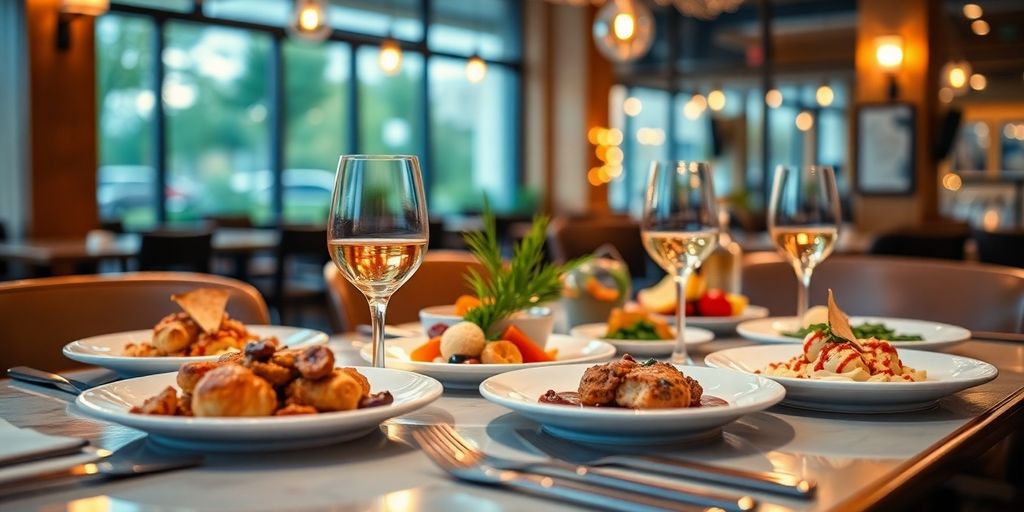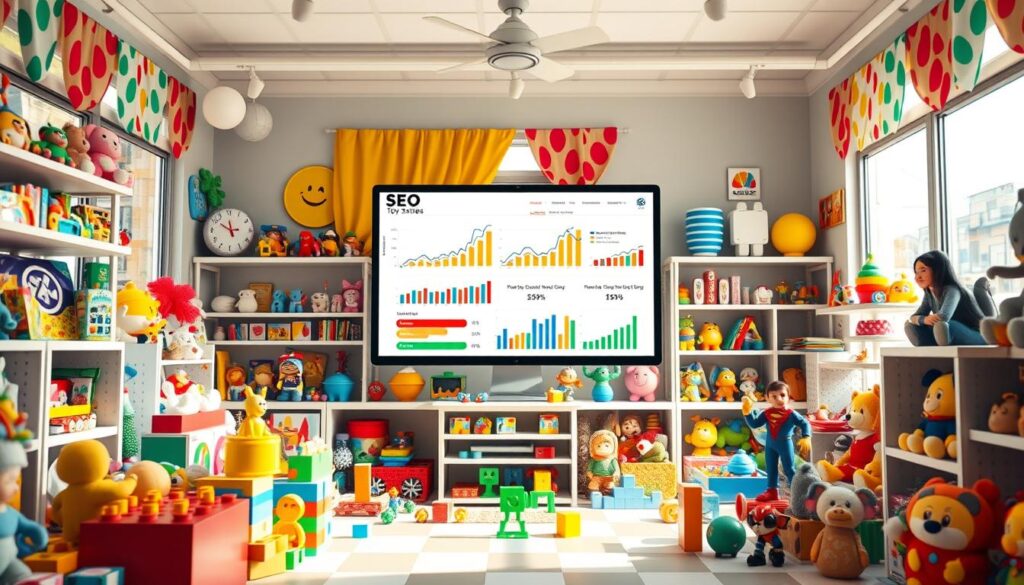Ever wondered why some diners seem to pop up everywhere online, while others are hidden away? It’s not magic—it’s SEO, or search engine optimization. For diners, this means making sure your place shows up when folks are searching for a spot to eat. With so many people checking out restaurant websites before deciding where to eat, having a strong online presence is huge. This guide will break down what SEO means for diners and how you can use it to get more people through your doors.
Key Takeaways
- SEO helps diners appear in search results when people look for places to eat.
- Optimizing your website can lead to more customers finding your diner online.
- Local SEO is crucial for attracting nearby customers.
- Social media can boost your SEO efforts by engaging with potential diners.
- Regularly updating your content keeps your SEO strategy effective.
Understanding SEO for Diners
Defining Search Engine Optimization
Search Engine Optimization, or SEO, is all about making your restaurant’s online presence more visible to folks searching for dining options. Imagine you’re looking for a cozy Italian restaurant online. The results you see on the first page are there because they’ve been optimized to appear at the top. SEO is the magic that helps your restaurant show up when potential diners are searching for a place to eat. It’s about using the right keywords, having a user-friendly website, and getting quality backlinks to boost your visibility.
Importance of SEO in the Dining Industry
In the competitive world of dining, standing out online is crucial. Almost 80% of people check a restaurant’s website before deciding where to eat. If your site isn’t up to scratch, you might lose potential customers. SEO helps bring more people to your website, leading to more orders and visits. It’s not just about being seen; it’s about being chosen. When your restaurant appears at the top of search results, it increases the chances of attracting diners who are actively looking for a place just like yours.
How SEO Influences Dining Choices
SEO isn’t just about getting your restaurant noticed; it’s about influencing decisions. When diners search for "best brunch spots" or "vegan-friendly restaurants," they’re often swayed by the top results. By optimizing your website and listings, you ensure that your restaurant is among those top choices. This means more foot traffic, more online orders, and ultimately, more satisfied customers. With effective SEO, you’re not just part of the conversation; you’re leading it.
Key Components of Restaurant SEO
On-Page SEO Techniques
On-page SEO is all about optimizing the content and structure of your website to make it more appealing to search engines. This involves using relevant keywords throughout your site, ensuring that your titles, headers, and meta descriptions are all well-crafted and engaging. Your menu, location, and hours of operation are must-haves on your site. Make sure these details are easy to find and up-to-date.
Here’s a quick checklist for on-page SEO:
- Use relevant keywords naturally in your content.
- Optimize titles and headers for clarity and engagement.
- Ensure your website is mobile-friendly and easy to navigate.
- Include alt text for images to improve accessibility and SEO.
- Regularly update your content to keep it fresh and relevant.
Off-Page SEO Strategies
Off-page SEO focuses on building your restaurant’s online reputation outside of your website. This includes earning backlinks from reputable sites, engaging with customers on social media, and managing online reviews.
Consider these strategies:
- Encourage satisfied customers to leave positive reviews.
- Build relationships with local food bloggers and influencers.
- Share engaging content on social media to increase your reach.
- Monitor and respond to reviews on platforms like Yelp and Google.
Local SEO Best Practices
Local SEO is crucial for restaurants aiming to attract nearby customers. By optimizing your online presence for local searches, you can ensure your restaurant appears prominently when potential diners search for places to eat in your area.
Key practices include:
- Claim and optimize your Google My Business listing.
- Ensure your name, address, and phone number (NAP) are consistent across all platforms.
- Use location-specific keywords on your website and in your content.
- Encourage local reviews to boost your visibility in local search results.
Having a strong local SEO strategy is like having a well-lit sign outside your restaurant—it helps locals find you easily and makes you stand out in a crowded market.
Creating an Effective SEO Strategy

Conducting Keyword Research
Before diving into the world of SEO, it’s crucial to start with keyword research. Think about what your potential customers might type into a search engine when looking for a restaurant like yours. Are they searching for "best brunch spots" or "local Italian restaurants"? Tools like Google Keyword Planner and SEMrush can help you identify popular search terms. Once you have your list, weave these keywords naturally throughout your website content, from your homepage to your menu descriptions.
Optimizing Website Content
Your website is your digital storefront, so it needs to be inviting and informative. Make sure your content is clear, concise, and filled with the right keywords. Don’t forget to include keywords in your meta tags and alt text for images. This helps search engines understand what your site is about. Also, consider using dynamic menus instead of PDFs. They not only improve user experience but also boost your SEO by making each dish a potential landing page.
Building Quality Backlinks
Backlinks are like votes of confidence from other websites. The more quality links you have pointing to your site, the more trustworthy it appears to search engines. You can build backlinks by collaborating with local food bloggers or getting listed on restaurant directories. Just ensure that these links come from reputable sources to avoid being penalized by search engines.
A well-rounded SEO strategy is like a secret recipe—it takes time and the right ingredients to see results. But once you get it right, the payoff can be significant, bringing more diners through your doors and boosting your online presence.
The Role of User Experience in SEO
Website Navigation and Design
Creating a user-friendly website is like setting a welcoming table for your guests. If folks can easily find what they’re looking for, like your menu or reservation options, they’re more likely to stick around. Good navigation means having clear menus and easy-to-click links. Think of it as the digital equivalent of a well-organized restaurant floor plan. A cluttered site is like a messy dining room—off-putting and confusing. Make sure your design is clean, simple, and intuitive.
Mobile-Friendliness
In 2024, if your site isn’t mobile-friendly, you might as well not exist online. Seriously, most people are checking out restaurants on their phones these days. So, your site needs to look great and work smoothly on smaller screens. This means text should be readable without zooming, and buttons should be easy to tap. Mobile optimization isn’t just a nice-to-have; it’s a must-have. If your site isn’t up to snuff, potential diners might just swipe left on your restaurant.
Page Load Speed
Imagine you’re waiting for your meal at a restaurant, and it takes forever to arrive. Frustrating, right? Slow page load times are the digital equivalent. If your website takes too long to load, visitors will bounce faster than a rubber ball. Aim for your pages to load in under three seconds. Use tools to test your site’s speed and make improvements where necessary. Fast-loading pages not only keep users happy but also give your SEO a nice little boost.
A smooth, fast, and intuitive website experience is like having a friendly, efficient staff in your restaurant. It keeps customers coming back for more, and in the world of effective SEO strategies, that’s gold.
Leveraging Social Media for SEO

Engaging with Customers Online
Social media is like the digital front porch for restaurants. It’s where you chat with your community, respond to feedback, and share what’s happening. Being active on platforms like Facebook, Instagram, and TikTok can boost your restaurant’s visibility. Social engagement doesn’t just build relationships; it also enhances your SEO. When you interact online, it signals to search engines that your business is active and relevant.
Sharing Content and Promotions
Got a new dish or a special event? Share it! Regularly posting about your menu, events, and promotions keeps your audience informed and engaged. This content can drive traffic to your website, which is great for SEO. Create posts that are visually appealing and include keywords related to your restaurant. This not only grabs attention but also helps in search rankings.
Building Brand Awareness
Social media is a powerful tool for building your brand. It’s about more than just posting; it’s about telling your story. Use platforms to showcase your restaurant’s personality and values. This creates a strong brand image that sticks with customers. As your brand awareness grows, so does your online presence, which can positively impact your SEO strategy.
"In 2024, having a social media presence isn’t optional for restaurants aiming to thrive. It’s a necessity for staying connected with customers and enhancing SEO."
By integrating social media into your SEO efforts, you create a dynamic online presence that attracts and retains customers.
Monitoring and Analyzing SEO Performance
Using Analytics Tools
To truly understand the effectiveness of your restaurant’s SEO efforts, you need to employ tools like Google Analytics or UpMenu’s tracking system. These platforms provide insights into how users interact with your website, allowing you to measure traffic, user behavior, and conversion rates. These insights are crucial for understanding what’s working and what needs improvement. Regularly reviewing these metrics helps you make informed decisions about your SEO strategy.
Tracking Keyword Rankings
Keeping an eye on your keyword rankings is essential. This involves monitoring where your restaurant stands in search engine results for specific keywords. By doing this, you can see which terms are bringing in traffic and which ones need more focus. Use tools like Google Search Console to track these rankings over time, and adjust your content strategy accordingly.
Adjusting Strategies Based on Data
Data-driven decisions are the backbone of a successful SEO strategy. Once you have gathered enough data from your analytics tools and keyword tracking, it’s time to make adjustments. This might mean tweaking your website content, changing your keyword focus, or even redesigning parts of your site to improve user experience. The key is to be flexible and willing to adapt your strategies based on what the data tells you.
Remember, SEO is not a one-time task but an ongoing process that requires constant attention and adjustment. By staying on top of your analytics and being proactive in your strategy adjustments, you can maintain a competitive edge in the dining industry.
Common SEO Mistakes to Avoid
Neglecting Local Listings
One of the biggest blunders in restaurant SEO is ignoring local listings. Your Google Business Profile is like a digital handshake with potential diners. If your address, phone number, or hours are outdated, you might as well be invisible. Keep this info fresh and accurate to ensure you’re showing up in local searches. It’s not just about being found—it’s about being chosen.
Ignoring Mobile Optimization
With everyone glued to their phones, having a mobile-friendly site isn’t optional—it’s a must. If your website doesn’t load properly on a smartphone, you’re pushing potential customers away. A site that’s clunky on mobile can frustrate users, leading them to a competitor whose site works seamlessly. Make sure your site is responsive and easy to navigate on all devices.
Failing to Update Content Regularly
Content is king, but only if it’s relevant. Stale content signals to search engines that your site might be neglected. Regular updates keep your site fresh and engaging, showing search engines that you’re active and relevant. Plus, new content can attract more visitors and keep them coming back. Whether it’s a blog post about seasonal dishes or updates to your menu, keep the content flowing.
Pro Tip: Regularly updating your website with fresh, relevant content not only boosts your SEO but also keeps your audience engaged and informed about your latest offerings.
By steering clear of these common pitfalls, you can maintain a competitive edge in the digital dining space. Learn more about avoiding SEO mistakes to keep your restaurant at the top of search results.
Wrapping It Up: SEO for Diners
So, there you have it. SEO isn’t just some techy buzzword; it’s a real game-changer for diners looking to get noticed online. With almost everyone checking out a restaurant’s website before making a decision, having a solid SEO strategy is like having a secret weapon. It can help you stand out in a crowded market and bring more people through your doors. Sure, it takes some effort and time, but the payoff is worth it. By keeping your website user-friendly and packed with the right info, you’re not just keeping Google happy—you’re making it easier for hungry folks to find you. And in the end, that’s what it’s all about, right? Making sure your tables are full and your customers are happy. So, roll up your sleeves and get started on your SEO journey today!
Frequently Asked Questions
What is SEO and why is it important for restaurants?
SEO stands for Search Engine Optimization. It’s important for restaurants because it helps them appear higher in search engine results, attracting more customers by making the restaurant easier to find online.
How does local SEO help my restaurant?
Local SEO helps your restaurant show up in local searches, like when someone nearby searches for a place to eat. This increases the chances of attracting local diners.
What are some simple SEO tips for restaurant owners?
Keep your website updated with current menus, use keywords related to your food and location, and encourage customers to leave reviews online.
Why should my restaurant website be mobile-friendly?
A mobile-friendly website ensures that people can easily view your site on their phones. Since many people use their phones to find places to eat, this can help attract more customers.
How do reviews impact my restaurant’s SEO?
Reviews can boost your restaurant’s online visibility. Positive reviews can improve your rankings in search results, making your restaurant more appealing to potential customers.
What role does social media play in restaurant SEO?
Social media can drive traffic to your restaurant’s website and improve your online presence. Engaging with customers on social media can also enhance your search engine rankings.






